Tim C. Taylor's Blog, page 13
July 6, 2012
I’m on the Summer Splash Blog Hop (July 23-31)
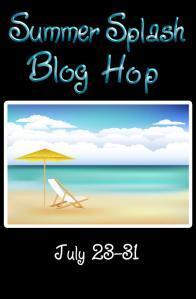 Today we’re expecting a whole month’s rainfall to descend in just one day. What better time than to announce that I’m participating in my first blog hop: the Summer Splash Blog Hop.
Today we’re expecting a whole month’s rainfall to descend in just one day. What better time than to announce that I’m participating in my first blog hop: the Summer Splash Blog Hop.
The idea of a blog hop is to have fun by visiting as many blog sites as you fancy, each of which will be offering prizes, competitions, and exciting posts. The whole thing is lubricated by prizes, competitions and a sense of fun. A central website is set up to explain the theme, links to the participating blogs, and how to win the grand prizes.
The theme for the Summer Splash is fiction, and authors will be contributing book-related prizes, myself included. I’m sure books will feature heavily in the prizes, but the more imaginative bloggers are finding all kinds of other things to award lucky winners.
The main blog hop site isn’t publicly available just yet, but I’ll be providing links to it when we get closer to the date.
I look forward to see you on the Summer Splash.








July 3, 2012
What would you see if you travelled faster than light?
In one of the comments in response to Ann Nyland’s excellent article on time travel, Earl Rogers asks what you would see if you were Captain Kirk on the starship Enterprise streaking away from the Earth at faster than the speed of light. Would you see time running backward?
What a great question. To which the answer is: I don’t know. So I’m hoping someone will read this post and answer that question.
And it is a great question, isn’t it? We’re used to special effects in TV and film, where the stars blur into lines when the Star Trek warp engines engage, or the swirly-whirly weirdness when you look out of the window while in hyperspace. But how much of this is real? I know there are science fiction writers who read this blog. Perhaps we’ll learn something to add a little verisimilitude to our fiction. (Verisimilitude is a word I would never have come across if I didn’t read science fiction; it means realism.)
I’ll set out the little that I know and at the end I’ll show a photograph of genuine faster-than-light travel (yes, really).
Relativistic Doppler Effect
Let’s start with sub-light speeds where we approach but don’t exceed the speed of light. A couple of effects come into play here. One is the Doppler Effect, which you will recognize when applied to sound. It’s the change in wavelength when something approaches you and then passes you, the sound of the siren from a racing ambulance lowers in pitch as it passes.
The same thing happens with light, although you also get an effect that I don’t fully understand called aberration, which narrows the light reaching you as you face forward in the direction of travel.
So on your near-c spacecraft (or if you’re a caped superhero capable of such speeds) if you look ahead, you see the Universe blueshift (Doppler Effect makes the light appear blue) and also narrow into an ever-shrinking cone of light. Eventually the light blueshifts into the ultraviolet and shrinks to a point.

Relativistic effects. If this doesn’t animate, try clicking it.
If you look behind you (which was Earl’s original question) then the light does the opposite. It smears out and redshifts until it passes out of the visible light spectrum and into infrared.
That’s a dramatic effect, but look behind at the Earth and it’s the same old Earth moving forward in time, just seen through distorted light. Although I’m sure if you’ve built your spaceship or enhanced your body to travel at such speeds, you can adjust the light to bring it back into the visible spectrum and sharpen the image.
Superluminal travel
Superluminal travel is going faster than the speed of light (I had to get superluminal in this post because it’s one of my son’s favorite words, the others being cake and Lego). What do you see when you’re superluminal?
This is where I’m looking for some help…

An object approaching at faster than light. If this doesn’t animate, try clicking. Source: Wikipedia
According to Wikipedia, when a superluminal object travels towards you, it is invisible until it passes you and you are hit by a luminal boom (like a sonic boom). Then you see a redshifted image of the object passing away and beyond you. At the same time you also see (if you have eyes in the back of your head) a blueshifted image of the object approaching you. Here’s the interesting bit… if I’ve understood this correctly, the light hitting you from the approaching object arrives in the wrong order; the object appears to move backwards. In other words, suppose you’re on an asteroid in your spacesuit and the Starship Enterprise passes you at warp factor 3. Here’s what I think you see:
BOOM! The luminal boom hits. Lots of Cerenkov Radiation (which I’ll come to in a moment) which I’m guessing will look like a burst of blue ball lightning (that’s mostly a guess, folks)
Then the Enterprise screams past (metaphorically; there’s no sound in a vacuum) in both directions simultaneously!
In one direction, the Enterprise is redshifted. This is the true direction of travel.
In the other direction, the Enterprise is blueshifted. The ship appears to be moving backwards, away from you, but that’s a trick of the light. Because the Enterprise is moving faster than light, it’s overtaking the light coming off it. So you see the light from the Enterprise when it’s 1 mile away from you before you see the light from when it was 100 miles away — thus it appears to move backwards.
How much is the light blue- and red-shifted? I’ve no idea. I suppose it depends on the speed of travel. Perhaps at warp factor 3 the observer sees an interesting visual effect (an opportunity there for space-tourism?). But there again at warp factor 10, maybe the Doppler Effect is so extreme that it kills you: the blueshifted light shifts out of the visible spectrum, past ultraviolet to bathe you in lethal X-rays. Meanwhile the redshifted light goes beyond infrared into microwaves, which instantly turn your corneas into giant cataracts (apparently your corneas would fry first because there are no blood vessels to take the heat away) and shortly after you would boil (in which case this could be an opportunity for space-catering — leave dishes underneath a flight path of superluminal ships and have your food cooked for free).
By the way, I have looked into this topic before. I Every time I look, there seems to be more detail and better diagrams on Wikipedia. I like Wikipedia!
Do you see time running backwards?
We still haven’t directly answered the original question. If you travel faster than light and look back at the Earth, does time run backwards until you see dinosaurs?
Well, yes, I think you do, assuming you have telescopes powerful enough to see behind over great distances. Light from the time of the dinosaurs is still out there, scattered, diffuse, distorted, but still expanding through space at the speed of light. If you traveled fast enough you could overtake that light so you could observe it. And once you overtake the speed of light you would be seeing events in reverse order. So yes, if you want to see the dinosaurs for real, all you have to do is invent a faster-than-light spacecraft, and the capability to process the incredibly diffuse light from millions of years ago, and you could see the dinosaurs stalking the Earth… backwards!
The pedant in me insists that there is an easier way to see dinosaurs. It’s the old birds-are-really-dinosaurs idea. I hadn’t realized, until I helped my son with his homework recently, that biologists now classify birds as part of the Dinosauria clade (a clade is a branch on the tree of life, a grouping of species used in biological classification).
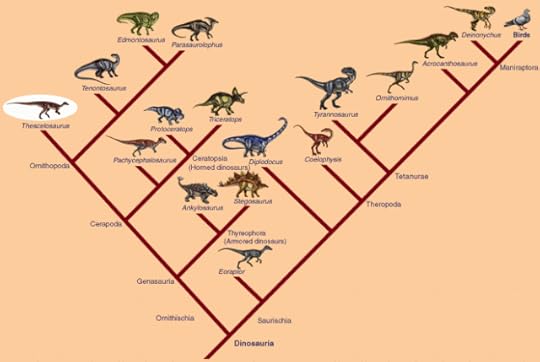
It’s official! Dinosaurs are still alive!
Faster than light travel on Earth

Ahmadinejad at the nuclear reactor
It is possible to see faster than light travel in real life. In fact, I did just that a few months ago; I saw it on the telly. I saw a news bulletin about the Iranians defiantly showing off their nuclear reactor. I think a reactor was being ceremoniously opened by President Ahmadinejad. Here’s a photo of him at the event. He’s in front of what looks like a deep swimming pool, or perhaps an enormous ice-cream-making machine. The water is blue and that blue is Cerenkov Radiation, an effect that happens when particles travel faster than light.
When we’ve been talking about faster than lightspeed, what we really mean is faster than the speed of light in a vacuum. Light travels much slower in water (about 0.75c), slow enough that radiation from the nuclear reactor is travelling through the water faster than the light is traveling through water. So, yes, you really are seeing a photograph where something is traveling faster than light.

An American nuclear reactor showing Cerenkov Radiation. Source: Wikipedia
Am I Right?
I’ve scooped some half-understood facts from Wikipedia and added my own flaky interpretation and filled some gaps. It sounds plausible enough for an episode of Doctor Who. But what would science fiction writers who know their science make of it, writers such as Gregory Benford, Stephen Baxter, and David Brin? Would anyone care to correct my inevitable mistakes?








June 30, 2012
Doctor Who and Theories of Time!
I was absolutely delighted when the doctor offered to write a guest post about time travel. No, not the Doctor, but fellow author of time travel novels, Doctor Ann Nyland, who is also offering two copies of her time travel novel, Hedgeland, as a giveaway. Here’s Ann…
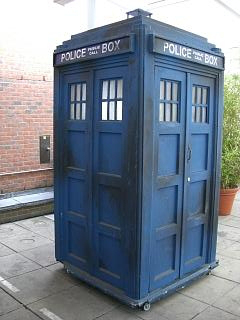
A time travel machine, yesterday.
There are several theories of time travel. Einstein’s theory of relativity predicted wormholes, which are a way to pass from one place to another without traveling through the space. A wormhole is like a shortcut. As an example, let’s say that there was a wormhole between London and New York. This would mean that someone would be able to leave New York, enter the wormhole, and arrive in London a few minutes later. Of course there isn’t a wormhole (as far as we know!) between London and New York, so people have to use the traditional methods of travel.
Scientists do now know that wormholes do exist, and that time travel via one of these worm holes is indeed possible, but these wormholes are minute, so tiny that even a flea would not be able to go through. The famous scientist Stephen Hawking has said that if a wormhole is between two points of time rather than two points of space, then time travel is possible. Hawking says time travel is indeed possible, but only time travel to the future.
It has been known for some time that time travels faster in space than it does down on earth. It is also scientifically accepted that traveling near the speed of light will cause someone to time travel to the future. Of course, we haven’t traveled anywhere near as fast as the speed of light yet. If you traveled around the earth at the speed of light, you would go around the earth seven times in one second.
Time travel does present us with paradoxes. The most well-known paradox is the grandmother paradox. Imagine if you went back to the past and killed your own grandmother when she was a baby. Then, in theory, you would never have been born, so how did you go back and kill your own grandmother? There are three theoretical ways around this.
The first theory is that the past is predestined and defined, that backward time travel is only possible if everything the time travel does in the past is already fixed and part of history. The past is an unchangeable constant. You, the time traveler, will not be able to kill your grandmother as circumstances will prevent you, no matter how you try. In the Doctor Who episode The Waters of Mars, the Doctor realizes that Captain Adelaide Brooke’s death on Mars is a “fixed point in time” and so he must not intervene, but then changes his mind and takes her to Earth. Captain Brooke immediately commits suicide on Earth, which suggests that her death was predestined and defined. The second theory is that when you, the time traveler, kill your grandmother, you immediately create a parallel world.
Another example of someone dying to get time back onto its path was the episode Father’s Day. Rose Tyler saved her father, Pete, from being hit by a car and dying in 1987, and this set a series of dire events in motion. Pete decided to die to rectify the situation.

Möbius Strip
The third theory is the Möbius strip. A Möbius strip is a surface with only one side. To make a practical example, take a paper strip and twist it, then join the ends of the strip together to form a loop. In other words, start making a loop out of a strip of paper but twist the ends before you join them. Applying this to the grandmother theory – you can time travel to the past and kill your grandmother, but you can still be born and currently be alive, because you and your grandmother are stuck in a loop with no beginning or end; that is why it is possible.
In the Ontological Paradox (also called the Bootstrap Paradox) an item becomes or creates its past self. For example, someone from the future sends back instructions on how to build a time machine to their past self, who then builds the time machine, and when they arrive in the future, they have the instructions which their future selves send back.
The Ontological Paradox appears several times in the Dr Who 2007 episode “The Shakespeare Code.” To Shakespeare himself, the Doctor quotes lines from Shakespearean plays that Shakespeare has not yet written. Shakespeare likes the lines and says he will use them in a future work.
In one of my all-time fave Dr Who episodes, the 2007 “Blink,” the Doctor records a message on film in 1969 in the form of half a conversation. The other half is filled in when Sally Sparrow sees the DVD of the message 38 years later in 2007. Her friend Lawrence Nightingale writes down the whole conversation. A year later, Sally Sparrow sees the Doctor, who does not of course recognize her, and hands him the transcript, which he later uses when the Weeping Angels send him back to 1969.
In another example of the Ontological Paradox, in the 2010 episode “The Big Bang,” the Doctor goes to the past to give Rory his Sonic Screwdriver to enable Rory to free the imprisoned Doctor and return to the past. In “The Curse of Fenric,” when the Doctor’s companion Ace visited 1943 with him, she ensured the possibility of her own birth by saving her own mother from her grandmother.
A Möbius strip, also called a time loop, is recurring theme in Dr Who. In “Carnival of Monsters,” the occupants of the ship SS Bernice are caught in a time loop when the Doctor happens upon them. However, in most instances, the Doctor uses time to trap enemies.
In the episode “Image of the Fendahl,” the Time Lords sealed the Fifth Planet in a Time Loop. In “The Invasion of Time,” K9 tracks down their home planet of the Vardans who are attacking Gallifrey. The Doctor beams the Vardans back to their home planet and then traps it in a time loop.
In “The Armageddon Factor,” the Doctor, with the help of Romana and K-9, disables the computer Mentalis and gives the Key of Time enough power to create a time loop in which to trap the Marshal’s ship as well as the Mentalis control room which is in an automatic self-destruct sequence.
In “The Claws of Axos,” the Axons land on Earth, looking to use the energy of every life form on earth for their much-needed fuel. When they meet the Doctor, they decide to travel through time and space to feed on energy. The Doctor tricks Axos into linking its drive unit to the Tardis and sends Axos into a time loop.
In “Meglos,” the Doctor was the victim of a time loop. When the Doctor, Romana and K-9 try to land the Tardis on Tigella, Meglos traps them in a time loop.
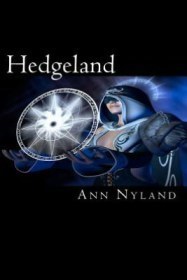 Dr. Ann Nyland has written several novels and non-fiction books. Her time travel novel is called Hedgeland and is available in paperback and Kindle editions in the US and UK , as well as iTunes, Barnes & Noble , Kobo and elsewhere. Read more about Ann and her book on her blog here.
Dr. Ann Nyland has written several novels and non-fiction books. Her time travel novel is called Hedgeland and is available in paperback and Kindle editions in the US and UK , as well as iTunes, Barnes & Noble , Kobo and elsewhere. Read more about Ann and her book on her blog here.
You can be sure that anyone writing such an excellent post is also capable of writing an excellent time travel novel. Find out for yourself in Ann’s giveaway. If you want to be in with a chance of winning a digital edition of Ann’s book, simply leave a comment on this post. Giveaway closes on Sunday 8th July 2012. Winners will be emailed an eBook edition of Hedgeland in their choice of either Kindle, ePub, PDB or PDF format. Good luck!








June 27, 2012
Is de-excavation the new archaeology?
I was shocked and saddened to read this BBC report on Mohenjo Daro, a 4,500-year-old village so well-preserved that you can walk the streets and visit the marketplace. You can, but no one does because it’s in Pakistan, which isn’t everyone’s favourite tourist destination right now. The sad news is that having been buried for thousands of years, now that it’s been uncovered, the bricks are disintegrating fast. The only answer seems to be to bury it.

Mohenjo Daro: source Wikipedia

The Indo-Greek kingdoms. Click for larger image
I once wrote a story called The Pillar of Heliodorus set in Taxila, another ancient city in Pakistan. I was fascinated by the mix of cultures when, for a few centuries, Greeks left behind in the wake of Alexander the Great’s conquests went on to rule the Indus Valley and some of northern India. Taxila was one of the main Indo-Greek cities. But the events in my story were taking place 2,500 years after Mohenjo Daro was at its height.
I love the sense of wonder I feel when reading the best science fiction. But the layering of deep time in our own history is just as astonishing.








June 25, 2012
Pillboxes: just how much are we influenced by childhood experiences?

Audley End
Yesterday I took my family to Audley End House a stately home wonderfully restored and maintained by the charity, English Heritage. It’s big all right, with gardens modelled by famous landscaper Capability Brown and an opulent interior with a very large number of paintings, many of them portraits of the original owners going back to Thomas Audley who built the first house in the time of King Henry VIII (big guy in a hat who had a lot of wives). Judging by the difficulty in getting my six-year-old son away from it, the children’s play area was a success too. And the horses were as huge as they were indulgent!

Can you imagine dusting this?
Even though building work on the house only began in 1603, which seems like only last week to someone who grew up in Colchester (the earliest parts of my home town were built when Christ was still alive and you just take that kind of antiquity for granted when growing up), what I enjoyed most was the sense that this was not a moment in history that has been frozen, but rather that there was a constantly changing history to Audley End, the estate had a life of its own that both influenced and was influenced by the world around it… and still does.
That’s how I like my fiction, both when I’m reading and when I’m writing. I like the feeling that behind the events of my story, that wider events of history are unfurling, that they are in constant motion and we see a slightly blurred snapshot as it moves forward in time. That snapshot includes modernity, but also the washed-up remnants of earlier eras, still jostling against the contemporary developments and determined to remain relevant. That’s why one of my favourite authors is Stephen Baxter with his long perspectives of history in his Time’s Tapestry series (to take just one example) and of future-history in his Xeelee series. China Mieville too: I enjoy the richness of his Bas-Lag setting, even though I’m not especially fond of his plotting.
Audley End was like that. A huge construction when started in 1603, when the family fell out of favour the buildings fell into disrepair and was inherited by the Crown. Another noble family acquired it in 1701 but demolished two-thirds of the building to reduce it to manageable size. The interior was gutted and redone in many styles over the years, several of which have been recreated and are on show now. And at the same time Jane Austen was inventing the romantic heroine, Audley End became a scientific centre for agricultural research.
What triggered my childhood memories were the concrete tank traps and the pillboxes that are still there in the beautifully landscaped gardens of Audley End. If the word ‘pillbox’ doesn’t mean anything to you, think of German defences at the top of Omaha Beach in Saving Private Ryan… they’re pillboxes: squat concrete miniature forts. In 1940, 28,000 were built in England to guard against German invasion.

A typical English pillbox. Probably a little smelly inside.
By 1980, when I was a young boy growing up in Colchester, many of these concrete forts were still around and perfect for playing war (if you could hold your nose against the stench). You could even see pillboxes from the top deck of the bus to school. The slit holes were perfect for siting an imaginary gun, and fighting back the invaders. In those days we constantly relived the Second World War; there was no question but that the imaginary enemy were Germans. I’m pleased to say that my son has no real concept of that war: to him the enemy are the more abstract ideas of aliens, undead, or criminal anti-heroes. And I was fortunate that the idea of armoured checkpoints and invasion stoplines was not a contemporary reality to me, as it had been to people I met later in life.
But the Audley End pillbox reminded me of growing up in a small town bursting with remnants of a two thousand-year-old history still jostling for relevance. On my walk home from school to the bus stop, I would pass through Roman gates, see the castle built as part of the Norman occupation of England, the Dutch Quarter built by Huguenots fleeing continental persecution, St Mary-at-the-Walls where the cannon called Humpty Dumpty was brought crashing down in the great siege of 1648, and all the rest that I won’t bore you with. The point was that every day I saw a small English town in the early 1980s and simultaneously saw a place rich with history for which the 1980s were just a brief, blurred moment.
It’s only that I enter my 40s, and have a family of my own, that I realise the extent to which my childhood experiences have shaped me and are going on to shape my children. This wealth of history is only one strand of that, but I can see now that it is part of the reason why I read and write what I do today.
I’ve been thinking about this topic recently. In a roundabout fashion, my recent trip to the US Embassy reminded me of my junior school education (elementary and junior high in North America) which was peppered by bomb scares. It took me many years into adulthood before I realised that other children hadn’t learned games to play after a bomb threat evacuation. It’s not half as dramatic as it sounds, but I’ll post on that soon.
In the meantime, if you live in the UK and fancy a new hobby, one that I could imagine getting into if I had the time, and I suspect my wife would consider a sad middle-aged male obsession, then check out these pillbox websites, complete with photos and diagrams. http://www.pillbox-study-group.org.uk/homefrontpage.htm and http://www.pillboxesuk.co.uk/








May 28, 2012
Stephen Baxter review copy winners
I’ve sent out copies to the winners of Stephen Baxter’s new book: Last and First Contacts.
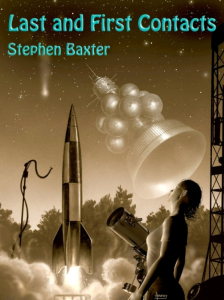 Thanks for entering and enjoy your books:
Thanks for entering and enjoy your books:
James Kelker
Jovid52
Mike Louks
A.B.R.
Rob Evans
Astronomer72
If you haven’t received anything, entered but didn’t get on the list, or need help loading up the book, then get in touch.








May 24, 2012
Parenting by Kindle & and the curse of editing Part 2
Yesterday, I mentioned how we’d gotten out of a tight spot through buying (and reading) my son the Kindle edition of Mr Stink by David Walliams.
Being able to buy a new book without leaving my son’s bedroom is one way in which our lives have changed over the twelve months. That’s not the only change, though. In the past year my career has changed; now I write books, do freelance editing and typesetting, and run a publishing business. I do all of the above with print books, but my main revenue comes from eBooks. I find I can’t look at an eBook any longer without a professional assessment.
I have become afflicted by the Curse of Editing.

Beware the Curse of Editing
So when it came to my turn to read a chapter of this new book, Mr. Stink, here’s what I found.
The first thing very apparent was that the Kindle edition at £4.99 sells for more than the paperback at £4.30. It’s not an outrageous price, but for the eBook to cost more is simply disgraceful. HarperCollins will make a far higher margin out of the eBook than the print book, at least twice as much in my estimation. And don’t let anyone fob you off with the excuse that eBooks are subject to VAT. They are, but Amazon Europe is domiciled in Luxemburg, not the UK, and I can tell you that the VAT on the £4.99 book is only 15 pence. So, shame on you, HarperCollins, for not giving your eBook customers a fair deal.

A screenshot from a properly built Kindle book.
The second thing I noticed was that the Kindle book had been produced nicely. Result! It kept the illustrations from the print book (from Quentin Blake, no less!), it didn’t have spurious hyphens and broken-up words. It even had ersatz drop caps and chapter navigation. It might sound strange, but this is the first time I’ve bought a book from a major publisher where they’ve actually bothered to format the book to the same kind of standard I can produce for my own books. It’s a strange, and I’m sure, temporary phenomenon, but the standard of eBooks from major publishers is often mediocre and sometimes woeful, far worse than most self-publishers, despite their much higher prices. It’s just like when CDs first became popular and record labels rushed to reissue their back catalogue onto CD, often using vinyl copies as their source, rather than going back to the original master tapes.
With major book publishers, problems often stem from scanning in paper books and leaving in all the justification (which makes no sense at all for eBooks, leading to strange hyphens and broken words) or converting from PDFs or electronic files laid out for printing paper books (which can have the same problems, especially if there is any fiddling with hard- or optional-hyphens, which never translate well to Kindles).
You can see this for yourself if you ever buy a Kindle edition of a newspaper. I do this myself all the time; it’s a great idea. But you will see some broken words and spurious hyphens. That’s because the newspapers take their electronic files set up for the paper edition and convert automatically to Kindle format, same as the worst book publishers. Now, I don’t mind that with newspapers because time is precious with a daily paper. I do mind with book publishers. There’s no excuse. All they need to do is pay (*ahem*) someone like me to do a proper formatting job. Not that I’m biased, you understand.
The third thing I noticed — and with a sinking feeling, because I realised I’m never going to lose this curse — were all the grammatical errors in Mr. Stink. On the first couple of pages, I spotted a ‘was’ that should have been a ‘were’ (subjunctive mood) and incorrect capitalization of ‘mother’. As I often tell authors whom I’m editing: if you aren’t sure how to capitalize a word, at least be consistent. Not only was Walliams inconsistent in his capitalization but he was inconsistent on the same page, which is the kind of thing readers sometimes spot. Mr Walliams writes fabulous stories; that’s his (second) job. I’m not disappointed with him, but the copy editor must have been asleep that day.

Some grammar, yesterday
Does any of this grammatical correctness matter? I find it does to me when I’m reading a book from a major publisher, but that’s a curse from having done so much editing — it’s something I find I can no longer turn off. I still enjoy reading the story (if it’s good) but in the back of my mind is the thought: should have done better. But does correct grammar matter commercially?
I look sometimes at other independent publishers and self-published authors to benchmark myself against my peers. I looked inside a science fiction Kindle book yesterday that’s doing really well. It’s a 2012 re-issue of a book first published in 2009. In the preface the author explains that there were grammatical errors in the first edition, but now they’ve been sorted out and his wife has proof-read. I turned to the first chapter; there’s a grammatical error in the very first sentence.
I wish the author well; I don’t wish him success because I don’t need to: he’s already successful, and good for him. But incorrect grammar clearly hasn’t been an obstacle to that success. That much is clear. What I sometimes wonder is whether correct grammar is an obstacle to commercial success.
With the books I publish, I ask proof-readers to raise anything that they think might be a problem. I’d rather get false positives than miss genuine errors because a proof-reader was unsure. And I get a lot of false positives. Subjunctive mood is probably the most common. Most people don’t understand what the subjunctive is let alone how to use it. Not surprising, since there are disagreements about some uses, and it isn’t simple. Take a look at the Wikipedia entry. Confused? I was.
Here’s a famous line from Fiddler on the Roof: “If I were a rich man, daidle deedle daidle, daidle daidle deedle daidle dum.”

Fiddler on the Roof: the world’s first musical about the Klezmer-subjunctive mood
If I can draw your attention from the deedle-dums to the bit at the beginning, it says if I were a rich man, not if I was. That’s correct use of the subjunctive. Sometimes this type of subjunctive is called counterfactual. In other words, the singer is a poor man, not a rich one. When you talk about something that isn’t true, you’re using the subjunctive mood.
It was one of these counterfactual subjunctives that Walliams (or Walliams’ copyeditor) missed in Mr Stink. But then I got thinking… what if that particular grammatical error had been deliberately introduced? After all, publishers aren’t in the business of being grammatically correct, they’re in the business of selling books to make a profit.
Thinking about it, I estimate that the number of people who would notice and object to getting the subjunctive wrong, is smaller than the number of people who would notice and (mistakenly) object to getting the subjunctive right. The implication is that I should deliberately introduce errors into my books. It’s not something I’m prepared to do just yet, but the idea has lodged. Oh, dear!
But then, thinking about it a little more, that’s what I do already with the word ‘data’. Yes, it’s a plural, but most people think it sounds wrong when you write ‘these data’ rather than ‘the data’. So when I see data used as a singular, I will make a note to the author I’m editing, check it’s used consistently in the manuscript, and leave in the ‘error’. Hey, English is a living language. It changes. Deal with it!
The fourth and (thankfully) the most important thing I learned about reading Mr Stink was that David Walliams can write really good children’s books.
Who would have thought? Celebrities who use the power of their name to write books, or have books ghost-written for them, are usually dire. But then, why on Earth am I surprised? Walliams made his name by writing and starring in comedy sketch shows. That’s all about telling a story, and both inventing and portraying memorable characters.
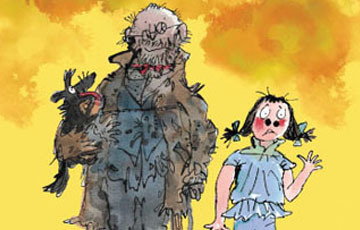
Hooray for Mr. Stink








May 23, 2012
Parenting by Kindle, Mr Stink, and the curse of editing
 Sometimes life takes unexpected turns. Here’s a parenting anecdote from last night that shows how my family’s lives have changed over the last year, thanks to Mr. Bezos and his company, Amazon.
Sometimes life takes unexpected turns. Here’s a parenting anecdote from last night that shows how my family’s lives have changed over the last year, thanks to Mr. Bezos and his company, Amazon.
My son’s off school, ill. It’s only a cold, so nothing to worry about, but it’s still hit him hard. Yesterday he spent the day dozing downstairs on the sofa under his quilt, ate next-to-nothing, and volunteered to go to bed early (which, as any parent will know, is unheard of under normal circumstances).
Naturally he woke up again at the wrong time. It was about 10:30 pm and the poor lad was in a right state. He loves us to read him books, but every book we offered to read to calm him down was met by wails of distress. He told us endlessly that: ‘all parents are useless’. Anything we suggested just made him cry more.
Then someone suggested getting another David Walliams book. For those not in the UK, Walliams is a well-known comedian, and his surname isn’t a mistake: he was born Williams but there was another David Williams already registered with actor’s union. Anyway, he wrote some children’s books. My cousin got me one for Christmas last year, Gangsta Granny, and it was surprisingly good.

Either Mr Stink or David Walliams, can’t remember which
The idea was so unexpected, and welcome, that the mood of panic was pierced, and our frantic boy waited patiently for us to start reading his new book. We didn’t need to go to a bookshop, which was just as well late at night as they would all be closed. The WiFi was on, and my wife’s Kindle already there, so my wife bought the book via the Kindle, without even getting out of her chair.
My son loved the story.
And so did we.
Problem solved, thanks to Walliams’ book, Mr Stink, and the Amazon Kindle, which let us do something that only a year ago would have been unthinkable.
Thank you, Mr Bezos, without whom last night would have been hell.
Tomorrow I’ll post a sequel to this anecdote in: Mr Stink and the Curse of Editing…








May 19, 2012
Createspace finally extends its operations to Europe
Anyone self-publishing print books through Createspace (and possibly those who chose Lulu instead) should take note that last Wednesday, Createspace added distribution options for the UK and continental Europe.
If your print books are published only through Createspace, you should certainly go to your Createspace dashboard now and open up your projects to add the new distribution channels, which sell through amazon.co.uk and the other European Amazon sites.
The European prices are higher than in the US. And for a fair comparison with selling books in the UK through Lulu, you have to consider that amazon.co.uk takes only a 40% cut and to sell through other retailers in the UK you would need Createspace’s Expanded Distribution with its 60% cut (in which case Lulu and Createspace would work out about the same).
But for most small- and self-publishers, that’s not important; selling your print books through amazon.co.uk is all you really need. Through Createspace you can now sell books at a lower price (or fatter margin) in the UK and Europe than you can through Lulu. For UK-based publishers, the remaining advantage for Lulu now is that you can get proof copies within days. Createspace proofs are still only sourced from the US and take weeks to arrive.
My advice; be patient and switch Createspace… or wait until orders begin to be fulfilled to iron out any starting wrinkles and then switch.








May 18, 2012
How UK authors can escape US withholding tax on their royalties
Several UK-based authors, publishers, and one literary agency have asked me how to avoid paying 30% tax on earnings from amazon.com and other US-based retailers such as Smashwords and Createspace. I’m most of the way through the process now, and so it’s time to share how I’ve got to this point.
The most important thing I’ve learned, is that the process has been considerably less painful than I thought it would be. If you find tax forms to be complicated and unpleasant — and foreign tax ten-times so — then read on, because it needn’t be in this case.
In a nutshell
If you self-publish eBooks or print books in the US through amazon.com, Createspace, Smashwords or similar, then that organisation is required by the US tax authorities (IRS) to deduct 30% of your royalties and give it to the US government. Here’s what you do to avoid that:
While you’re going through the tax process (it will take a few months) contact Amazon/ Createspace/ Smashwords (through Smashwords Account – Edit my payee info) and tell them to withhold your payments while you acquire an ITIN (they are used to this request).
Ask your US-based organisation to send you a letter confirming that you need an ITIN. I got mine from Smashwords. There are many good reasons to use Smashwords and this in one of them. You can read more about how to do this here.
Fill in IRS form W-7. This gets you a US tax number called an ITIN.
Go to the US Embassy in London (the IRS have their own section there) with your W-7 form, the letter from Smashwords (or whoever) and your passport. Don’t annoy the policemen with machine guns.
Explain to the embassy people that you need an ITIN. They will check your passport and your W-7 and then do all the communication with America for you. I found them to be extremely helpful.
Wait a couple of months
Receive a letter from the IRS in Austin, Texas. This will have your ITIN. Make a note of it. In my copy the ink is rubbing off the paper!
Now fill in another IRS form (W-8BEN) and post one copy to each of the US-based organisations that are withholding your royalties. This form gives them the proof that you have a valid ITIN and that they can now stop withholding tax. They can do this because there is a ‘double-taxation treaty’ between the UK and USA, which means you only have to pay tax in the country where you live. Unfortunately, this means that…
Although you no longer pay US tax, you must still declare your foreign earnings on your UK tax return, and pay your normal rate of income tax to the HMRC. If you’re a higher-rate UK taxpayer, then none of this will actually save you money (unless you are into tax evasion).
Here are a few more details
Getting your ITIN (W-7 form)
Smashwords have a lot of information on this and allow you to defer your income and ask for a letter requesting an ITIN by clicking buttons on the Edit payee information section of your Smashwords account. See here. You need $10 of income from Smashwords before they’ll do this. The idea is that you need to tell the IRS (the US tax people) that there is a genuine US-based company that’s paying you money. And to do this you need a letter from a US-based company as evidence.
To get your ITIN, you need to fill in form W-7. You can download this from the US Embassy website here: http://london.usembassy.gov/irs/irsitinappy.html
You can fill in the W-7 using pen, pencil, possibly not crayon, or (if you’ve got a fairly recent copy of Adobe Reader) you can open the PDF and fill it in on your computer.

Click for a full-size version
Here’s the one I filled in. It worked for me. One tip: do not use abbreviations anywhere. For example, some people have made the mistake of entering “U.K.” That will be rejected; use “United Kingdom”
Depending on where you live, a trip to London might be expensive. But the IRS need your passport, and the cost of getting your passport officially notarised so you can send a copy is almost certainly more than the cost of a trip to London. Plus, if you’re apprehensive about whether you’ve filled everything in correctly, or about sending your passport around the world, it is much more satisfying to have an IRS person tell you face-to-face that you’ve filled in everything right, and that they will handle it from there. So make a day of it, pop in at the Palace to have tea with the Queen or whatever, but make a detour to the London Embassy first.
For visitor information & times, see the US London Embassy website http://london.usembassy.gov/irs/index.html When I visited, the IRS section offered a walk-in service on Tuesday through Thursday. You turn up and wait your turn; you don’t make an appointment.
There’s a security building outside the embassy where you’ll go through security scanners etc. The website says don’t bring mobile phones or electronic equipment. In fact, people were leaving these things in numbered boxes in the security building. I wouldn’t bring a big rucksack, though. The train stations have left luggage services where you can dump large items of baggage.
Once you’re through the security section, turn left to the tradesman’s entrance round the side. Don’t do what I did and turn right, because a man with a machine gun will suddenly take a close personal interest…
Once in the building, the IRS section is down the steps to the left in a little cupboard.
I found the people there very helpful and the wait was about ten minutes. Explain that you want an ITIN. They’ll probably ask why you deserve one. The answer is that you’re paid royalties by a US-domiciled company and they deduct withholding tax.
Filling in the W-8BEN
Smashwords give the latest info about where to find the form here.
The organization that pays you the royalties needs to match your ITIN with the account they hold for you. For example, if you publish through Amazon KDP, then you need to give Amazon your publisher code. You do this on Line 10 of the W-8BEN form.

Click for a full-size version
Here’s a filled-in version.
What about non-UK authors?
Most authors paying US withholding tax live in countries with a tax treaty with the US. The forms and IDs (W-7, ITIN, W-8BEN) are the same but you might have to pay a reduced amount of US withholding tax rather than none at all. In some cases you need to give more information at the bottom of the W8-BEN if your tax treaty has different rates of withholding tax for different types of royalties (which is not the case in the UK where you don’t need to pay any withholding tax at all). Hopefully, if you’re non UK-based and you’ve read this far, then I’ve helped to get you started, but I suggest you do some more Googling for advice local to your country. Good luck.
Further information
On matters like this, I would always Google around for a second opinion or two. For me, though, the key thing was to go to the London Embassy in person because even if I had made a mistake in the W-7 form-filling, they would have guided me through filling in a fresh form until I got it right.
Good luck!











